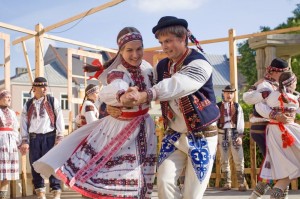Language Door has provided classes in dozens of languages to students from all over the Sherman Oaks area. Our focus is on small group classes to maximize the interaction between students and teachers. We also offer private lessons, translations, interpreting services, and corporate classes.
Interesting Facts About Czech Language & the Czech Republic
- The most interesting fact about Czech language is that it has lot of words which do not contain vowels.
- The Czech Motto: “Pravda vítězí” (Czech) “Truth prevails”
- Czech and Slovak languages are mutually intelligible to people accustomed to the other language’s pronunciation, particularly people who have lived at the time of Czechoslovakia (the country split in 1993) . The Sorbian languages spoken by a minority of people in south-eastern Germany (Saxony and Brandenburg) are also closely related to Czech language. The relation between these West Slavic languages is a similar to that of Castillan Spanish, Catalan, Galician and Portuguese together.
- There are over 2,000 castles, keeps, and castle ruins in the Czech Republic, one of the highest density in the world
- The Charles University in Prague, founded in 1348, is the oldest university in Eastern Europe, and one of the oldest in the world in continuous operation.
Learn to Speak Spanish with Language Door Today!
Language Door’s expert teachers offer instruction for students of all ages. We keep our tuition prices low but offer quality instruction in a pleasant environment. Our class size is always 8 students or less. Our teachers are native speakers and offer the hands on training that will enhance your learning experience.

[xyz-ihs snippet=”languages”]
 Where Is Czech Spoken?
Where Is Czech Spoken?
Czech has about 10 million speakers in the Czech Republic, or Czechia, and many speakers in other countries, mostly emigrants and children of emigrants who left the country in sizable migrations around World War I, World War II, and the years 1948 and 1968. Many Czech speakers can be found especially in Austria (mostly in Vienna), Poland, Germany, Ukraine, Croatia (mostly in the Daruvar area), in Western Romania (in Banat), in Australia, and Canada. Several tens of thousands of Czechs have continued to live in the Slovak Republic after the split of Czechoslovakia at the end of 1992. However, the largest group of Czech speakers outside the Czech Republic lives in the United States, in cities like New York, Chicago or Cleveland and in a number of rural communities in Texas, Wisconsin, Minnesota, and Nebraska.
The Origins Of Czech
The first Czech language developed short after the first Bohemian state that emerged in the late 9th century when it was unified by the Premyslid dynasty. The oldest development stage of the Czech language called proto- czech can be found at the end of the 10th century despite there being no written texts.
The region where Czech is spoken is traditionally called Bohemia (Čechy) and was named after the Boii tribe who, according to Roman sources, have inhabited the area since at least the 1st century AD.
Czech is spoken by approximately 12 million people, thereof over 10 million in the Czech Republic. It is a West Slavic language most similar to Slovak and Polish. Czech belongs to the family of Indo-European languages with Slavish origins.
